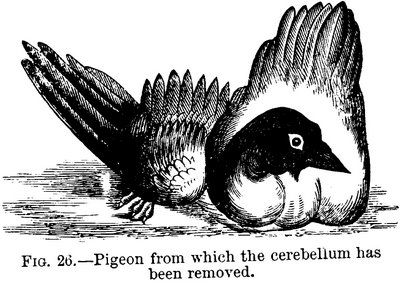Those ancient Peruvians were proper cautions. According to National Geographic, some of them worshipped a spider god. Hmm. As I so often ask myself, what would Atahualpa do?
Category Archives: Things I Have Learned
Carpentry In Liechtenstein
The always intriguing Strange Maps has a very useful map of Liechtenstein showing the eleven enclaves (some of which are possibly exclaves) into which that tiny principality is divided. They are (in alphabetical order) Balzers, Eschen, Gamprin, Mauren, Planken, Ruggell, Schaan, Schellenberg, Triesen, Triesenberg, and Vaduz.
Tiny Enid is thought to have spent some time dwelling in a chalet in Planken, though no plaque or inscribed stone exists to mark what might, after all, be just a rumour put about those seeking to muddy the waters of the plucky tot’s biography, if a biography can be said to have waters. I shall have further words to say about those who sow confusion in the field of Tiny Enid life studies shortly, and they will be stern words, sulphurous ones, declaimed from a platform, a platform I hope to erect in Planken itself, or failing that, in Schaan or Balzers. The platform will be made from expensive wood, as you would expect, but the carpenters will be cheap, if I do my homework, which involves consulting a directory of Liechtensteinian carpenters and other woodworkers and ranking them according to price. Such an activity can becalm the most anguished of souls.
From Ancient Peru
More evidence – as if it were needed! – of the overlooked rise in Aztec fundamentalism. According to the Guardian, newly released Ministry of Defence files include a document showing that a person was “contacted by aliens” descended from “legendary feathered serpents from ancient Peru“. People, be on your guard!
Â
Ruskin Goes To Croxsted Lane
The peculiar forces of devastation induced by modern city life have only entered the world lately; and no existing terms of language known to me are enough to describe the forms of filth, and modes of ruin, that varied themselves along the course of Croxsted Lane. The fields on each side of it are now mostly dug up for building, or cut through into gaunt corners and nooks of blind ground by the wild crossings and concurrencies of three railroads. Half a dozen handfuls of new cottages, with Doric doors, are dropped about here and there among the gashed ground: the lane itself, now entirely grassless, is a deep-rutted, heavy-hillocked cart-road, diverging gatelessly into various brick-fields or pieces of  waste; and bordered on each side by heaps of – Hades only knows what! – mixed dust of every unclean thing that can crumble in drought, and mildew of every unclean thing that can rot or rust in damp: ashes and rags, beer-bottles and old shoes, battered pans, smashed crockery, shreds of nameless clothes, door-sweepings, floor-sweepings, kitchen garbage, back-garden sewage, old iron, rotten timber jagged with out-torn nails, cigar-ends, pipe-bowls, cinders, bones, and ordure, indescribable; and, variously kneaded into, sticking to, or fluttering foully here and there over all these, – remnants broadcast, of every manner of newspaper, advertisement or big-lettered bill, festering and flaunting out their last publicity in the pits of stinking dust and mortal slime.
John Ruskin, from Fiction : Fair And Foul, 1880
Â
Pointing With Sticks
“If there is one thing more hateful than another, it is being told what to admire and having objects pointed out to one with a stick.†– Francis Kilvert
Pudding Fenders
Dear Mr. Key, writes Mick Wiggins from across the pond, Just like a recent listener’s account of the Hooting Yard narrative voice taking over the helm whilst sightseeing, I similarly experienced the same while visiting the Maritime Museum in Astoria, Oregon, just this last weekend.  The museum, located at the mouth of the once mighty Columbia River, open to Cape Disappointment and just down the way from Dismal Nitch, was a very good museum, with many arcane and wonderous accounts of the famous “Graveyard of the Pacificâ€.  Of course it was when I found myself studying a fantastic display of pudding fenders that the Hooting Yard Effect commandeered my own internal voice, and it really was a value-added treat. It is too bad you cannot capitalize on this effect, but perhaps you should look in to it. At any rate, thank you for the many hours of listening pleasure.
I have replied to Mr Wiggins asking him to tell us more about pudding fenders, so watch this space.
Removal Of Pigeon Cerebellum
It is imperative that I draw your attention to the latest post on the splendid blog According To The Ninth, “the world as seen through the clarifying lens of the 9th Edition of the Encyclopaedia Britannica (1875-1889)â€.  As you can gather from the illustration, the topic is fiendish experiments upon the brains of birds. Well, upon the brains of pigeons, to be specific. You may chuckle, or you may vomit, but you will almost certainly learn something you did not know before.
Â
Â
Â
Â
Â
Â
Â
Â
Â
Â
Â
Foff
Following yesterday’s note about three-letter place names, I feel I must enthuse about, and recommend, the latest addition to the groaning bookshelves at Haemoglobin Towers. I have only just started to read McKie’s Gazetteer : A Local History Of Britain, and am smitten (as I knew I would be). David McKie’s book is not a comprehensive guide, but a series of essays about places that have caught his interest for one reason or another. The piece on Aberdeen, for example, is largely devoted to a potted biography of Alexander Cruden, the self-styled “Alexander The Correctorâ€, compiler of one of the most demented works of scholarship ever fashioned, the Complete Concordance To The Holy Scriptures.
I clapped my hands in glee to discover that Jaywick had not escaped McKie’s attention. Though he does not mention the day the cows came visiting, he is a fount of information on that ill-starred seaside resort, including the fact that it was founded by a man whose nickname was Foff.
If you need any further persuading to buy this excellent book, bear in mind that David McKie used to write the Smallweed and McElsewhere columns in the Guardian, where, more than once, he made mention of Hooting Yard. Clearly a very sensible man.
Hoo Van Kew
The splendid Diamond Geezer has a useful list of three-letter UK place names:
Alt, Ash, Ayr, Bix, Bow, Box, Cwm, Dun, Elm, Ely, Esh, Eye, Foy, Ham, Hay, Hoe, Hoo, Hoy, Ide, Kea, Kew, Kyo, Lea, Lee, Lew, Lye, Moy, Old, Ord, Ore, Raw, Rhu, Rye, Uig, Usk, Urr, Van, Wem, Wix, Wye.Â
Potato Club
If ever there was a society I wanted to join, it would be the Slovenian Association For The Recognition Of Sauté Potatoes With Onions As A Main Dish. Over at Mustard Plaster, Miss Hathorn helpfully provides the words to the official anthem.
Popular Scientific Recreations, Profusely Illustrated
Further to the thrilling item about the Dobsonmeter, the admirable Richard Carter has begun posting excerpts from an 1882 book entitled Popular Scientific Recreations, Profusely Illustrated at the Friends Of Charles Darwin site. He begins with that most useful of innovations, the dog-powered sewing machine. More outlandish “recreations†are promised, so do make sure you keep an eye on the site in the coming weeks and months, indeed years.
Duly Noted
Gosh! “Walsall is in the grip of a pet abandonment crisisâ€. The Crunch of Credit strikes again.
Birthday Of Gouty Man Of Letters
Â
Â
Â
Â
Â
Â
Â
Â
Â
Â
Â
Today is the 291st birthday of Horace Walpole, as fine a letter-writer as ever lived. Walpole coined a number of words in his time, some of which are in general usage (serendipity) and others which damned well ought to be (bewolfenbuddlement).
“The whole secret of life is to be interested in one thing profoundly and in a thousand things well.”
Protect That Insect!
According to today’s Guardian, back in 1964 an Israeli newspaper reported that the music of the Beatles included “yeah-yeah-yeah howls which are capable of striking dead a real beetleâ€. I am sure Yoko takes a very dim view of gratuitous cruelty to insects, and I look forward to the full-page advertisements she will surely be taking out in the world’s major newspapers to express her, and her bespectacled husband’s, devotion to our creepy-crawly friends.
The Dobsonmeter
“Dear Frank,†writes Richard Carter of Gruts, “This week’s New Scientist  (20 September, 2008) contains the rather stirring story of how a lone British Antarctic Survey scientist managed to give NASA a red face by discovering the hole in the ozone layer with a 50-year-old instrument assembled in a shed. The instrument was called a Dobsonmeter.â€
The Dobsonmeter was invented by a certain Gordon Dobson, who may or may not have been related to the out of print pamphleteer whose doings are so assiduously chronicled at Hooting Yard. Judging by these excerpts from the New Scientist piece, there is a definite affinity:
Without [Joe] Farman, the truth [about the ozone layer] might not have been discovered for several years or more. But he couldn’t have done it without his trusty Dobsonmeter, first assembled in a shed outside Oxford more than 50 years earlier by another dogged researcher, Gordon Dobson from the University of Oxford‘s Clarendon Laboratory…
The odd thing about the Dobsonmeter is that for a quarter-century it was an instrument without much use. It finally came into its own during the International Geophysical Year of 1957, when researchers decided to make global measurements of the ozone layer. They put in an order for around 50 Dobsonmeters with the London instrument maker, R. & J. Beck.
Farman remembers going to Oxford to pick up his machine from Dobson in 1956. “Even after 25 years, they hadn’t completed the instruction manual,” he recalls. “That only arrived the following year.” Farman still has his original copy. For best results, it recommends wrapping a quilt round the instrument to keep it warm.
Only about 120 Dobsonmeters were ever made, of which some 50 remain in use. Each is known by its number. Dobson’s original, No 1, is in London‘s Science Museum. Farman made his discoveries with Nos 37 and 51. Probably the oldest still in use is No 8, now 73 years old and sitting on the roof of the Norwegian Polar Institute in Svalbard. Dobson died in 1976, so he never saw his instrument’s finest hour.



